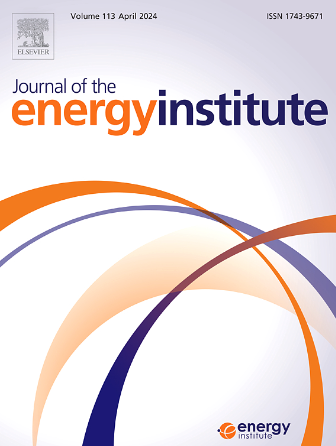Effects of boron-based additives on combustion characteristics, emission reduction, and performance improvement in internal combustion engines
IF 5.6
2区 工程技术
Q2 ENERGY & FUELS
引用次数: 0
Abstract
This study examines the impact of methylamine-borane (MAB), a hydrogen-enriched fuel additive, on the combustion dynamics, emission characteristics, and performance metrics of gasoline engines. The evaluation was conducted at volumetric concentrations of 5 % (MAB5) and 10 % (MAB10). The results indicated a substantial reduction in carbon monoxide (CO) emissions by 76.79 % for MAB5 and 66.39 % for MAB10, as well as a decrease in hydrocarbon (HC) emissions by 21.39 % and 35.39 %, respectively. Carbon dioxide (CO2) emissions were also reduced by 15.29 % for MAB5 and 9.76 % for MAB10, suggesting an improvement in combustion efficiency. However, an increase in nitrogen oxides (NOx) emissions was observed, likely due to higher peak combustion temperatures. Elevated oxygen (O2) levels in the exhaust were noted, reflecting alterations in in-cylinder oxygen dynamics and combustion stoichiometry. Performance analysis revealed that MAB use resulted in higher brake-specific fuel consumption (BSFC) and lower thermal efficiency, with reductions of 7.69 % and 9.93 % for MAB5 and MAB10, respectively, attributable to the lower energy density of MAB relative to gasoline. A decrease in exhaust gas temperature was observed, suggesting a complex interaction of energy release and heat transfer processes. Despite the reduction in emissions, the increase in NOx formation highlights the intensification of combustion phases and greater thermal stress within the engine cylinder. The findings suggest that MAB, as a hydrogen-enriched fuel additive, offers notable benefits in emission reduction, but presents challenges such as reduced performance efficiency and increased thermal management requirements. These results underscore the need for optimizing additive formulations and operational parameters to balance the emission reduction potential with performance efficiency in gasoline engine applications.
求助全文
约1分钟内获得全文
求助全文
来源期刊

Journal of The Energy Institute
工程技术-能源与燃料
CiteScore
10.60
自引率
5.30%
发文量
166
审稿时长
16 days
期刊介绍:
The Journal of the Energy Institute provides peer reviewed coverage of original high quality research on energy, engineering and technology.The coverage is broad and the main areas of interest include:
Combustion engineering and associated technologies; process heating; power generation; engines and propulsion; emissions and environmental pollution control; clean coal technologies; carbon abatement technologies
Emissions and environmental pollution control; safety and hazards;
Clean coal technologies; carbon abatement technologies, including carbon capture and storage, CCS;
Petroleum engineering and fuel quality, including storage and transport
Alternative energy sources; biomass utilisation and biomass conversion technologies; energy from waste, incineration and recycling
Energy conversion, energy recovery and energy efficiency; space heating, fuel cells, heat pumps and cooling systems
Energy storage
The journal''s coverage reflects changes in energy technology that result from the transition to more efficient energy production and end use together with reduced carbon emission.
 求助内容:
求助内容: 应助结果提醒方式:
应助结果提醒方式:


